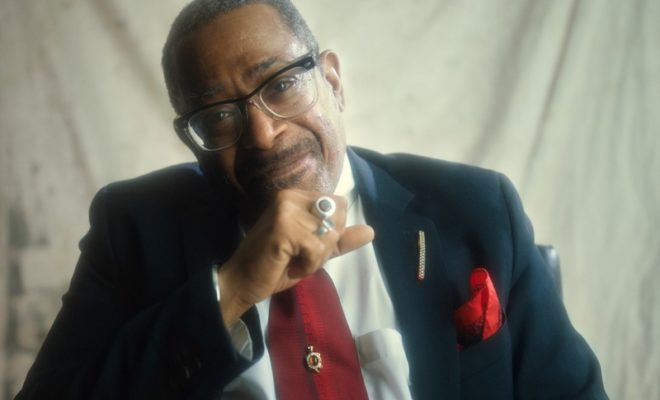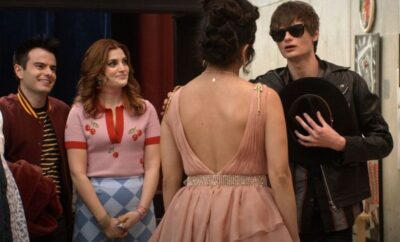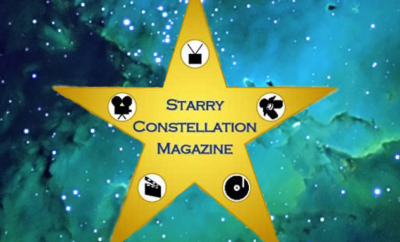
Movie Reviews
The Beauty President
By: Kelly Kearney
“I made a little dent in history,” described Terrence Howard Smith in his bid for the U.S. Presidency in 1992. What was seen as an over-the-top gimmick played out on the national stage turned out to be queer- history in the making thanks to a New York City drag performer named Joan Jett Blakk. After centuries of having been shoved in back of the far corners of America’s already crowded closet, Terrence (A/K/A Joan) tossed his/her wig into the ring with the backing of millions of queer voices silenced by homophobia and the devastating AIDS epidemic. In the documentary The Beauty President, director and editor Whitney Skauge masterfully mixes together present-day interviews with archival footage of Smith/Blakk’s memorable appearances at the Democratic National Convention. Soon-to-be President Bill Clinton might have been the party’s top pick, but Joan Jett Blakk brought the tears of millions just asking to be represented to the Capital’s stage.
Stunting with Pride
Terrence Howard Smith, who is as charismatic today as he was when he descended onto the floor of the DNC, talks about what lead him to his monumental moment in “Herstory” and why he felt it was his duty to the community and to his country to become the first black drag queen in the White House. During the first wave of the AIDS epidemic that left a wake of casualties the United States had not seen since the flu of 1918, Terrence was tired of losing his friends, some of whom were the most cherished members of New York’s LGBTQIA community. The silence from Washington and the city leaders of New York was deafening and it was in that heartbreak that Terrence found his purpose. It was a purpose of transparency, of truth and one that the heteronormative world worked tirelessly to ignore. Staying silent was a death sentence and Joan Jett Blakk was a voice that could heal his community and the nation. The world, and in particular the city he called home, attempted to ignore and “otherize” a deadly disease that by the end of 1992 (according to the NYC Aids Memorial) had killed an estimated 194,476 people and climbing with numbers almost doubling the following year. Howard Smith felt that loss deeply and in it a fighter was born. There was no end in sight to this disease, not without voices in D.C. lobbying for medical research, education and just a simple acknowledgement of pain and loss so many were feeling. Like any tragedy, victims and heroes die and are born, and like a beacon for change, Joan Jett Blakk gathered the community together to bask in her spotlight, even with the understanding that the path to change was going to be an uphill climb with no guarantees of a view from its peak. Visibility, then and now, was a necessary link in the chain of equality. In an era where queer culture clashed daily with discrimination in every sector of public and private life, the time to be heard was long past overdue. The healthcare industry, the savior of the sick, was underfunded, ill equipped and thriving on keeping the sick and oppressed on the proverbial down low. Bigotry’s biggest enemy, as we have seen in every decade’s fight for equality, is a change in public opinion brought on by unapologetic visibility and the demand to be seen. Nobody could do that better in 1992 than a drag queen running for President. Joan Jett Blakk was out, proud, well-spoken and informed and she was on a mission to search out any microphone that she could find to make it harder to brush these acts of oppression under America’s collective rug. She came onto the scene with a message that millions were dying to tell and, in the pre-internet times, there was no better way to shake up the establishment then by using our democratically elected process. Blakk was going to be the beauty president, a simple moniker attached to a glamorous black man in drag; however, in her glitzy style a powerful change would start to take root. Unbeknownst to the talking heads in D.C., and maybe even to herself, Joan/Terrence would help to bring glamour to the glamourless fight of living free of disease. Whether it be the disease of hate, or the disease called AIDS, she was going to be the superhero in heels the country had been waiting for.
Repeating the Past
Clips of Joan intercut with present day footage of Terrence was not pre-millennia’s usual fare. Homosexuality was still illegal in most parts of the country with drag only flourishing in the underground clubs of urban city life. Smith/Blakk’s message of creating a country where queer people could one day be equal to that of his fellow straight Americans. It was a call for respect and an appeal for America to feel some empathy for a group of people desperate to pursue their path to happiness. It was a presidential run that history attempted to brush aside, labeling it a stunt, but what stands out about Terrence’s candidacy is its relevance to today’s progressive movement. In one clip Joan holds an on the street interview where she talks about her platform, which included abolishing the police, a longtime foe of the pride community, and her plans to flip the military budget with the country’s educational funding to grow more brains and make less bombs. Of course, free healthcare for all Americans was also at the top of Blakk’s list of changes she hoped to implement, making her the first black socialist drag queen in any political race, then and now. Terrence used whatever platform he could find to voice the needs of his community in a time when politicians were not interested in reaching out to anyone who didn’t offer them a financially advantageous opportunity. If the run for the most coveted office on the planet was a stunt, it was not without purpose or forethought, which is more than can be said about many candidates who make their way onto ballots today.
Shot digitally but filtered to mimic film, The Beauty President is an effortless mash up of clarity and grittiness that flows from each flash from the past to the present day 16mm shots of Terrence. It’s fabulous driving score from Khamani Hagood partnered with Skauge’s seamless look at some of the darkest times of LGBTQIA culture manages to set the mood that often flip-flops between tragedy and triumph, with plenty of room for laughs. In what might be the highlight of the film, Terrence retells the story of how he managed to sneak into the convention dressed as himself with a dubiously procured pass, only to emerge from the bathrooms in full Joan Jett Blakk glory much to the shock and confusion of the press.
And while the film does an excellent job of filling the nine-minute runtime rich with history of the first drag queen write-in candidate for President, the documentary also does a superb job of highlighting its true purpose; a queer movement of recognition, of accountability and to provide a space where all people were welcome to speak with the promise of being heard. “If a bad actor can be President,” Jett Blakk said to a reporter outside the convention, “then why not a good drag queen?” After all, if the American dream means starting from nothing to claw (even in your manicured nails and glam look) your way to the top then Joan Jett Blakk was just following in the footsteps of our Founding Fathers. What’s more American than that? So, as Pride month wraps up and heads straight into Independence Day, take a step back into the past and spend some time with the president of hope, love and all things drag. It is a documentary short that is well worth the 9-minute viewing.





You must be logged in to post a comment Login